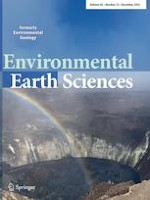01.12.2023 | Original Article
Microscopic mechanisms of shear strength variation in acid- and alkali-contaminated loess
Erschienen in: Environmental Earth Sciences | Ausgabe 23/2023
EinloggenAktivieren Sie unsere intelligente Suche, um passende Fachinhalte oder Patente zu finden.
Wählen Sie Textabschnitte aus um mit Künstlicher Intelligenz passenden Patente zu finden. powered by
Markieren Sie Textabschnitte, um KI-gestützt weitere passende Inhalte zu finden. powered by
